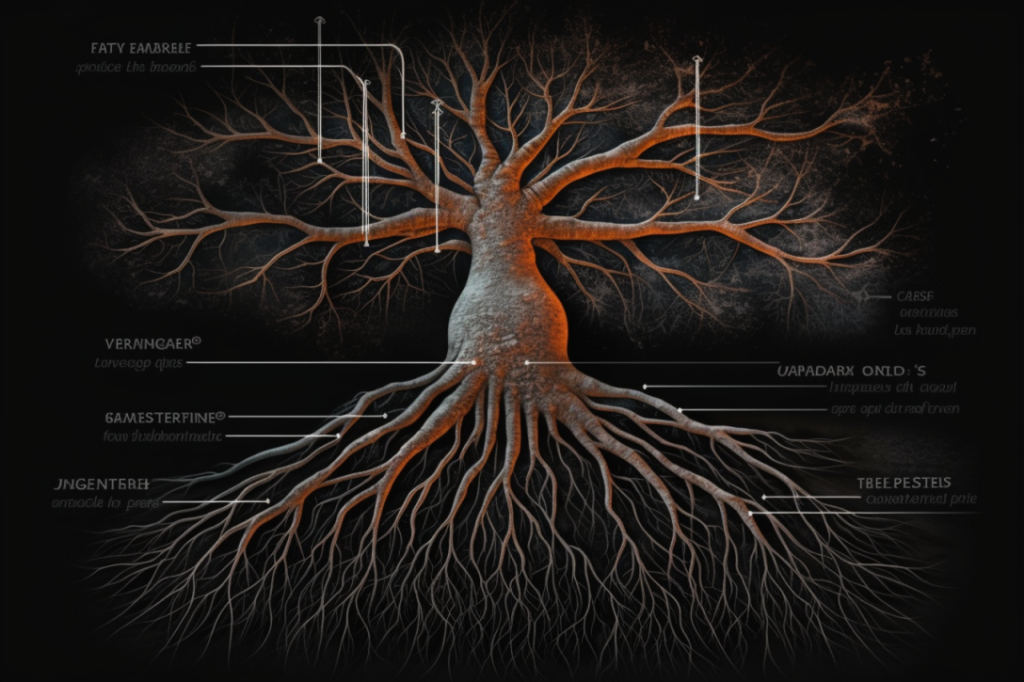What is user intent? How do you optimize your page for certain queries?
The way you answer these questions is what determines whether or not your content will be successful at answering a user’s query.
There are several types of user intent, including navigational, informational, transactional and commercial.
Each one has its own set of SEO best practices that you should use in order to improve your site’s search engine performance for that particular type of user intent.
What Exactly is User Intent?
User intent is one factor that all businesses must consider when determining their marketing strategy, because it tells you what someone wants and needs from your company before they’ve even walked through the door or clicked on your website.
The user intent behind a query is the ultimate goal a user wants to accomplish by searching for that query.
Understanding this will allow you to put the right content in front of these visitors so that they feel satisfied with your content when they click on your link.
Hitting your users’ pain points is critical if you want to nail down user intent.
A user’s pain point is something that motivates the user, such as a specific problem that makes them want to seek out your product because it can solve their problem.
You can analyze your users’ pain points by looking deeper into your product and asking the right questions about your users using the data that you currently have about your audience.
It goes without saying that if a person enters your site wanting shoes, don’t show them an article about fashion trends! Unless, of course, it’s about popular shoe fashion trends!
Understanding user intent allows you to write content for people looking at shoes so that they feel satisfied and that their query was effective, which leads to a better click-through rate and eventually, more conversions to paying customers.
User intent is all about satisfying the user’s ultimate goal.
Navigational User Intent
To target navigational user intent, use keywords and phrases that target how a user would search for a site, such as using its brand name or key phrases that have a navigational connotation.
You want to make your URL descriptive of what the user will expect to find on that page.
For example, if you’re writing about how often people should change their toothbrush, your URL might be “how-often-should-you-change-your-toothbrush” or something similar.
This type of content is typically used for finding an answer quickly especially for things like recipes, clothing sizes, and more.
In cases where Google crawls other sites instead of indexing a site directly (sometimes called being ‘deep linked’), we need to keep this in mind: by using best practices such as including relevant text that closely matches the intent behind the page, we can eventually perform for terms that our site is not specifically targeting.
You want to make sure your content speaks directly to the user’s intent and doesn’t come across as too promotional, gimmicky, or spammy.
You also need to provide a personalized experience by using phrases like “you” and “your”.
Make it easy on Google by placing keywords sensibly—don’t stuff them all at the bottom of your page!
Include a variety of synonyms when possible, which will help users find what they are looking for more easily. These synonyms will help you further nail down your user intent. Be careful not to use keyword stuffing, which is a bad SEO practice.
Use action verbs to make your content more accessible and easier to understand, which will help users find what they are looking for more easily.
SEO Tips for Establishing User Intent
When writing your content, it’s important that it appears high-quality, sounds professional and positive, and contains words that eventually lead to a potential customer taking action to buy your product.
Use action verbs. These will give the reader action-oriented messaging that you can use to make better calls to action (CTAs).
“Grow” is an example of an action verb; it tells us that our goal is to increase something. Whether it’s to increase a user’s happiness, profits, or some other metric.
This type of word provides direction, as opposed to just stating facts or describing things in general terms without explaining how these actions might be achieved.
Examples include words like “increase”, “growth,” etc., which tell us exactly how to accomplish each step in the process.
Use Verbs to Convey the Message
The strongest verbs are action or result-oriented.
“Increase” is an example of a verb that describes how our goal can be accomplished, whereas words like “should,” “could,” and “might” merely describe what might happen as opposed to describing specifically how something will occur.
Keep it simple! Keep your language simple yet conversational in order for your content to have greater accessibility.
Aiming for simplicity does not mean you need to sacrifice quality, but rather that you should avoid using complicated jargon and technical terms whenever possible.
If you use such jargon, define terms first so the reader doesn’t feel like the topic is too complex.
This way, readers with less background knowledge on the topic have a better chance of understanding the article. A good rule of thumb is if someone needs a dictionary, then they are likely not reading anymore because the content is likely too complex and they may have become lost.
Provide lists or bullets instead of long, complex sentences because they are much easier for readers to digest and help readers retain information.
Write in present tense. Writing in the present tense gives your reader the sense that what you are writing is more important, and unfolding in front of them.
This will make them feel like they are “a part” of everything that is going on within your content!
You may need to use past tense sometimes, but try not to overuse it—alternating between both tenses when necessary can be helpful if you need to build suspense or jump between topics or events.
Avoid writing in a passive voice. Passive voice is when the subject (the person or thing doing an action) of a sentence is not clear, and it sounds like the object in the sentence did something to someone else.
You’ll know what passive voice is when you see “it was” or the language used implies that “something was done.” Instead, try writing sentences with active verbs so that your reader knows who’s performing actions.
It can be tricky at first but it will quickly become second nature as you continue to write in the active voice.
Use shorter paragraphs. Long paragraphs may be intimidating for readers because they might have trouble understanding what the specific purpose or meaning of each paragraph is.
Writing for the web is a little bit different than academic writing.
Informational User Intent
Informational user intent is when a user is looking for information during the educational, or research phase of their project.
This could be anything from the basics to more complex topics, like programming in Python or advanced data structures in C#.
The articles that answer these questions will have content on them with keywords about those subjects and may contain links to other pages when explaining specific details.
Informational articles are typically written by hobbyists who want to share their knowledge with others who may be looking for the same thing.
Example of User Intent: Basic Cooking
The user intent behind cooking queries is a user’s desire to either learn cooking techniques, or how to cook specific dishes!
Recipes might range from mouthwateringly simple and quick takeout dinners (think: microwavable frozen meals) through complicated dishes requiring hours of prep work or an entire kitchen staff.
But when it comes to cooking user intent, it’s important to remember that it’s more than just recipes.
Cooking user intent is – almost – universal between all people who want a better understanding of cooking, regardless of their skill level. Beyond learning to cook, subtle variations in keywords can result in different phases of the process, depending on who you talk to.
Example of User Intent: Intermediate Cooking
Intermediate cooks are the vast majority of those with cooking queries. They have a general awareness and understanding of cooking, but don’t consider themselves experts in any one area.
They’re usually comfortable in the kitchen, but need help from time to time when it comes to something more specific or advanced (e.g., “What temperature is best for roasting vegetables?”).
Content catered to this category includes articles on everything from basics like knife skills to different techniques used in baking breads and other artisanal foods.
Topics like “How do I peel an avocado” should be directed towards this category of user because there are many people who are intermediate level who may not know how to peel an avocado!
Example of User Intent: Advanced Cooking
Advanced cooks are those who have been cooking for a while and know what they’re doing. But sometimes even the most experienced can’t find answers to specific issues when they arise!
That’s where advanced topics come into play; everything from knife skills (think: cutting open an avocado) to cooking several dishes at once using only one pot, pan or oven rack.
Topics like “How do I get my cake out of the pan?” should be directed towards this category because there are many people who are a bit more advanced who may not know how to do that.
Organizing Your Site Structure Based on User Intent
The above examples explain, in detail, the following topics as they relate to user intent: Beginner level cooking, intermediate cooking, and advanced cooking. These main keywords are known as your seed topics.
These seed topics can then be boiled down even further to more detailed topics. A good strategy is to create topic clusters surrounding each of your main seed topics, with detailed topics supporting that seed topic. Think of this as a twist on the old seed keyword vs. user intent-based keywords concepts. Instead of seed keywords, we’re using seed topics.
This in turn creates relevance and topical focus required for better website performance in the SERPs.
Transactional User Intent
Transactional user intent refers to e-commerce content and queries with intent-to-purchase motivating them. People often search through transactional user intent queries to compare prices, read reviews or purchase a product. For example:
- What are the best headphones for running?
- Is this jacket waterproof?
- What is the best oven for cooking pork chops?
All of these queries lead to specific products people can buy or purchase.
More About User Intent
The user intent behind a query is a method of understanding the unspoken reasons why people are searching for something.
You can be sure that, if someone types in “How do I remove my tattoos?” they want to know how to get rid of their tattoo ink because it’s no longer aesthetically pleasing to them, or references an embarrassing memory from when they were younger.
When someone searches, “What university should I go to?”, they are also asking themselves what school will give them the best opportunity for success as well as offer a range of opportunities such as networking with alumni and access to resources like libraries.
Where a particular query falls on the intent spectrum is a subtle yet important part of differentiating user intent, and one that you must consider when you are doing your keyword and niche research.
The most important thing when it comes to writing content that targets transactional user intent is providing all of your readers with precisely what they’re searching for and explaining how your business, site or product can help them!
This means including keywords related to the topic but also presenting information on how to use your product and service effectively.
User Intent is Critical to Nailing Down Search Queries Successfully
User intent is a significant factor in how a user interacts with your website. By understanding the types of user intents and considering them in your content strategy you can help make sure that each visitor to your site finds what they need!
- “What do I know about this topic?” (informational)
- How might someone use my product/service” (transactional)
- What site would be best for this topic? (navigational)
- Where can I go to learn more about this product/service? (commercial)
Zappos offers shoes for their customers’ desired product or service usage. This is one example of transactional user intent that should be considered when developing sites that cater to e-commerce customers.
As you can see by the below data from Semrush, on average there are approximately 210 searches over a 12-month period (estimate) for the keyword phrase “user intent.”
Source of data: Semrush as of 5/3/2021
As digital technology continues to evolve and people go online more often than ever before it becomes increasingly important to understand the intentions behind their search terms. What do users want? Is it information or social connection? Do they want someone else to talk with about the topic or do they just need help understanding where to get information?
As businesses increasingly take advantage of internet marketing, they’re finding that they can’t rely on the same old methods.
Using keywords alone without a focus on user intent won’t get you anywhere. It would be like creating a site without a target market in mind—no matter how much content you produce, you are most likely going to be unsuccessful.
Image Credits
Featured Image: Shutterstock / May 2021
Image 2: Semrush Screenshot / May 2021










